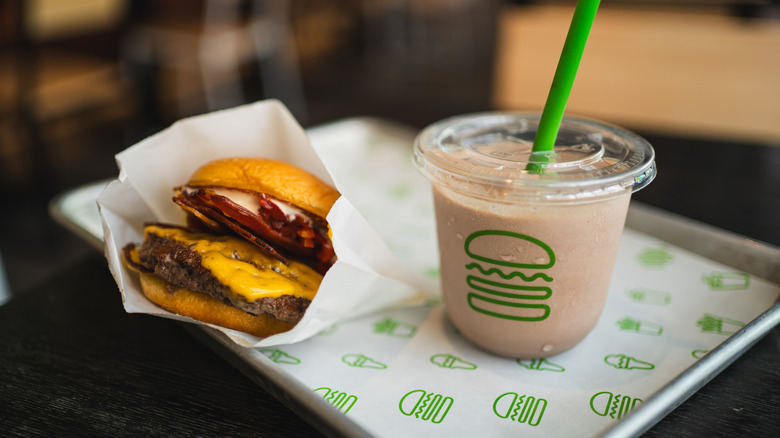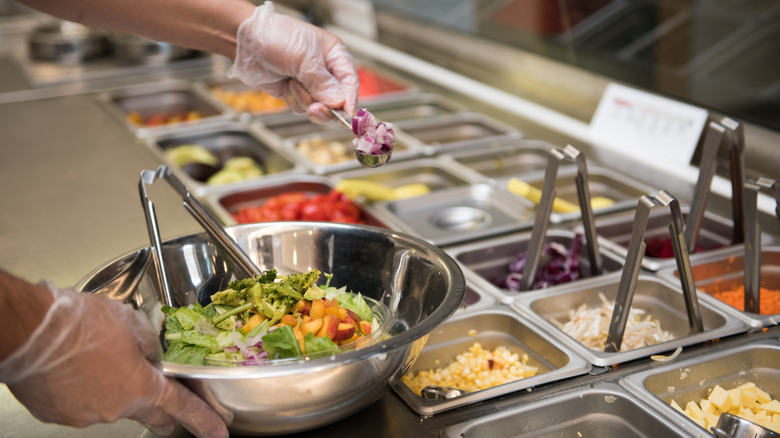What Separates Fast Food From Fast Casual Restaurants?
If you're someone that pays attention to the restaurant world, you've probably heard one term used to describe restaurants more and more in recent years: Fast casual restaurants exist in a space between fast food restaurants (think of McDonald's) and casual restaurants, which might include places like Denny's or Applebees. But, the exact line between fast casual and fast food restaurants isn't always super clear. The fast casual category includes places like Shake Shack and Panera. At least based on their menus full of burgers and sandwiches, these might look a bit like fast food places, but there are notable differences.
Fast casual restaurants are typically more upscale than fast food places. For example, you can probably expect higher food quality at a fast casual eatery. Think of the way that Shake Shack's burgers are made with a meat blend from a reputable supplier and with pillowy potato buns, and compare that to the plain-old, mass-produced burger of a fast-food place. As a result, you'll also usually pay more at a fast casual restaurant — Touch Bistro, a company that sells payment systems to restaurants, claims that fast casual checks are an average of $7 higher than fast food ones. Fast casual restaurants also often let you customize your orders more. A perfect example is the salad chain Sweetgreen, which gives customers a lot of choice when it comes to what goes in their meal.
It's also about the vibe
The difference between fast food and fast casual restaurants isn't just about food quality and menu, though. You'll often get more customer service at a fast casual establishment. This might mean that you have to order at the counter but your food will be brought to you at a table. At a casual restaurant, you'll get full table service. Fast casual restaurants are also less likely to have a drive-thru. In the case of Sweetgreen, it offers a more customized version of counter service where you pick and choose ingredients in an assembly line style. Naturally, there are gray areas — Subway also has this kind of service but is usually considered fast food because of its cheap pricing.
You'll also get a nicer ambiance at most fast casual restaurants because they're more geared towards customers dining in and lingering. Fast food dining rooms might be more sparse, as customers move quickly in and out if they dine in, or they may just get takeout. Speaking of lingering, fast casual restaurants sometimes serve alcohol — Taco Bell's new Cantina concept is one example — encouraging guests to spend more time on the premises. Overall, fast casual restaurants offer a taste of a full-service restaurant but with the convenience and affordability of fast food. Finally, bear in mind that while the examples here are chain restaurants, both fast food and fast casual restaurants can be independently run, too.

